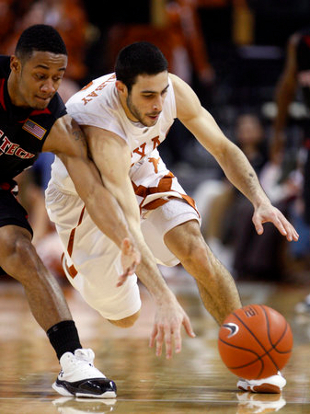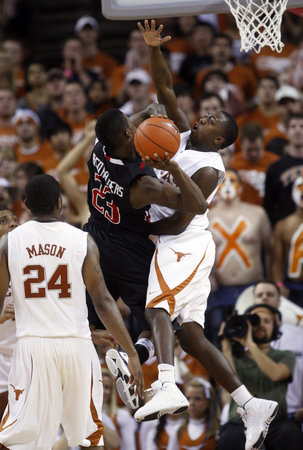#6/6 Texas Longhorns 95, Texas Tech Red Raiders 83
When we wrote about the problems plaguing the Texas offense on Tuesday night, we addressed the fact that Justin Mason and Dogus Balbay were offensive liabilities that were crippling Dexter Pittman‘s productivity. Opponents were well-aware that the duo was averaging a combined 7.2 points per game, which allowed two extra defenders to sag into the paint and stifle Texas’ inside game. Our proposed solution was to limit the amount of time both players were on the floor simultaneously, hopefully clearing up the spacing issues for the offense.
Of course, having Mason and Balbay combine for 31 points might also solve the problem.

Dogus Balbay had his best game of the year
(Photo: Ricardo B. Brazziell/Austin American-Statesman) 
Texas tightened its D in the second half
(Photo: Ricardo B. Brazziell/Austin American-Statesman) |











on 30 Jan 2010 at 7:58 am # Tweets that mention Longhorn Road Trip » Longhorn offense finds unlikely spark -- Topsy.com
[…] This post was mentioned on Twitter by Texas Longhorns Buzz, Ryan Clark. Ryan Clark said: Looking back at last night's offensive outburst: http://longhornroadtrip.com/2010/01/28/longhorn-offense-finds-unlikely-spark/ […]